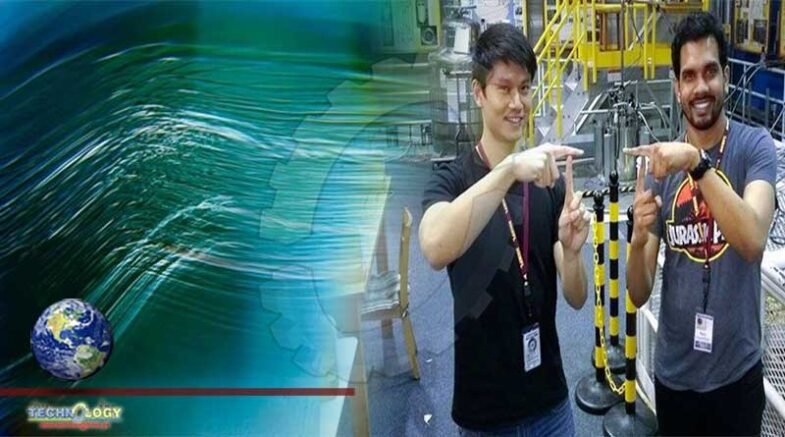Scientists have identified a new beautiful marriage when it comes to quantum materials for computing and low-temperature electronics.

Cornell University scientists have identified a new beautiful marriage when it comes to quantum materials for computing and low-temperature electronics.
Using nitride-based materials, the researchers created a material structure that simultaneously exhibits superconductivity—in which electrical resistance vanishes completely—and the quantum Hall effect, which produces resistance with extreme precision when a magnetic field is applied.
“This is a beautiful marriage of the two things we know, at the microscale, that give electrons the most startling quantum properties,” said Debdeep Jena, the David E. Burr Professor of Engineering in the School of Electrical and Computer Engineering and Department of Materials Science and Engineering. Jena led the research, published Feb. 19 in Science Advances, with doctoral student Phillip Dang and research associate Guru Khalsa, the paper’s senior authors.
The two physical properties are rarely seen simultaneously because magnetism is like kryptonite for superconducting materials, according to Jena.
“Magnetic fields destroy superconductivity, but the quantum Hall effect only shows up in semiconductors at large magnetic fields, so you’re having to play with these two extremes,” Jena said. “Researchers in the past few years have been trying to identify materials which show both properties with mixed success.”
The research of this beautiful marriage is the latest validation from the Jena-Xing Lab that nitride materials may have more to offer science than previously thought. Nitrides have traditionally been used for manufacturing LEDs and transistors for products like smartphones and home lighting, giving them a reputation as an industrial class of materials that has been overlooked for quantum computation and cryogenic electronics.
“The material itself is not as perfect as silicon, meaning it has a lot more defects,” said co-author Huili Grace Xing, the William L. Quackenbush Professor of Electrical and Computer Engineering and of Materials Science and Engineering. “But because of its robustness, this material has thrown pleasant surprises to the research community more than once despite its extremely large irregularities in structure. There may be a path forward for us to truly integrate different modalities of quantum computing—computation, memory, communication.”
Such integration could help to condense the size of quantum computers and other next-generation electronics, just as classical computers have shrunk from warehouse to pocket size.
“We’re wondering what this sort of material platform can enable because we see that it’s checking off a lot of boxes,” said Jena, who added that new physical phenomena and technological applications could emerge with further research. “It has a superconductor, a semiconductor, a filter material—it has all kinds of other components, but we haven’t put them all together. We’ve just discovered they can coexist.”
For this research, the Cornell team began engineering epitaxial nitride heterostructures—atomically thin layers of gallium nitride and niobium nitride—and searching for conditions in which magnetic fields and temperatures in the layers would retain their respective quantum Hall and superconducting properties.
They eventually discovered a small window in which the properties were observed simultaneously, thanks to advances in the quality of the materials and structures produced in close collaboration with colleagues at the Naval Research Laboratory.
“The quality of the niobium-nitride superconductor was improved enough that it can survive higher magnetic fields, and simultaneously we had to improve the quality of the gallium-nitride semiconductor enough that it could exhibit the quantum Hall effect at lower magnetic fields,” Dang said. “And that’s what will really allow for potential new physics to be seen at low temperature.”
Potential applications for the material structure include more efficient electronics, such as data centers cooled to extremely low temperatures to eliminate heat waste. And the structure is the first to lay the groundwork for the use of nitride semiconductors and superconductors in topological quantum computing, in which the movement of electrons must be resilient to the material defects typically seen in nitrides.
“What we’ve shown is that the ingredients you need to make this topological phase can be in the same structure,” Khalsa said, “and I think the flexibility of the nitrides really opens up new possibilities and ways to explore topological states of matter.”
Originally published at Phys.org
